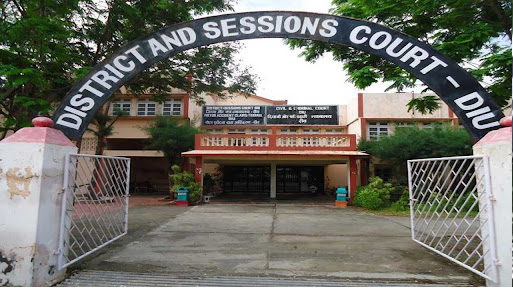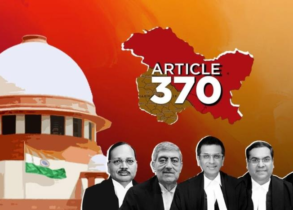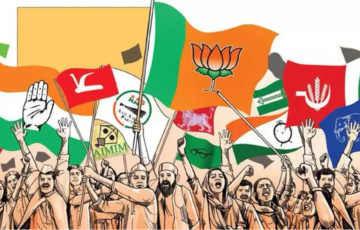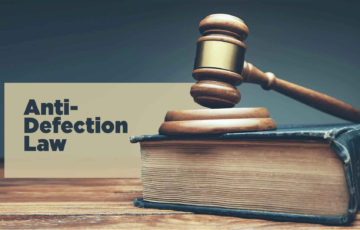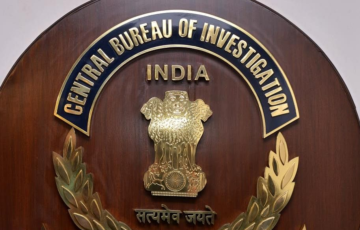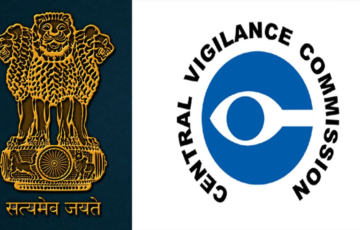SUBORDINATE COURTS
Introduction
The state judiciary in India comprises a hierarchical system of courts, including a High Court and a network of subordinate courts, often referred to as lower courts. These subordinate courts are termed as such because they operate under the authority and jurisdiction of the respective State High Court. They function at various levels within the state, primarily at the district and lower levels, handling different types of cases and legal matters.
Constitutional Provisions
- Part VI of the Indian Constitution, which includes Articles 233 to 237, contains provisions aimed at controlling the organization of subordinate courts and safeguarding their independence from the executive branch of the government. These provisions play a critical role in ensuring the separation of powers and maintaining the integrity of the judicial system.
- Article 233: This article deals with the appointment and posting of district judges. It states that district judges in a state are to be appointed by the governor of that state in consultation with the High Court. The appointments and postings of district judges are made by the governor after consultation with the High Court, which ensures that the judiciary has a say in the selection and transfer of district judges.
- Article 234: This article pertains to the recruitment of persons to be appointed as district judges. It outlines that in the case of promotion to the post of district judge, it should be based on seniority and promotion by selection through examinations conducted by the High Court.
- Article 235: Article 235 grants the High Court the control over district courts and courts subordinate to them. It empowers the High Court to ensure that the judicial administration is carried out in accordance with the law. The High Court has the authority to inspect courts, enforce discipline among judicial officers, and exercise superintendence over all courts in the state.
- Article 236: This article defines the category of officers who are to be considered as “judicial officers.” It specifies that members of the state’s judicial service, including district judges and civil judges, are classified as judicial officers.
- Article 237: Article 237 provides for the extension of the jurisdiction of one High Court over the territory of another state, which may occur by agreement between the states involved or as directed by the President of India.
District Judges
- Appointment by the Governor in Consultation with the High Court:
- District judges in a state are appointed by the governor of that state.
- The appointment is made after consultation with the state’s High Court, emphasizing the collaborative nature of the process.
- Qualifications for District Judge Candidates: To be eligible for appointment as a district judge, a candidate must meet the following qualifications:
- Not in Government Service: The candidate should not currently be in the service of either the Central or the state government. This requirement ensures that district judges have independence from the executive branches of government.
- Advocate or Pleader for Seven Years: The candidate should have been an advocate or a pleader for a minimum of seven years. This requirement emphasizes the need for significant legal experience before becoming a district judge.
- High Court Recommendation: The candidate must be recommended by the High Court for appointment. The High Court’s recommendation plays a crucial role in the selection process, as it signifies that the candidate meets the necessary qualifications and has the approval of the judiciary.
Judges other than District Judges
- Appointment Authority: The governor of the state is responsible for appointing individuals to the judicial service of the state.
- Consultation: Before making appointments, the governor is required to consult two key authorities:
- State Public Service Commission: The State Public Service Commission is a constitutional body responsible for conducting examinations and recruitment for various government positions, including those in the judicial service. The governor consults this commission to ensure that the appointments are made based on merit, through competitive examinations and selection processes.
- High Court: The governor also consults the state’s High Court. This consultation helps in ensuring that the appointments align with the requirements and standards of the judiciary, particularly with regard to legal expertise and competence.
Control over Subordinate Courts
- Control over district courts and other subordinate courts, as well as the management of personnel in the judicial service of a state, is vested in the High Court. This control extends to various aspects, including posting, promotion, and leave of individuals who hold positions subordinate to that of a district judge.
- The High Court plays a pivotal role in maintaining the efficiency, integrity, and independence of the state’s judicial system. It exercises supervisory authority to ensure that the lower judiciary operates in accordance with established legal procedures and standards. This control is crucial for upholding the principles of justice, accountability, and the proper functioning of the judicial service at all levels within the state.
Interpretation
- District Judge: The term “district judge” encompasses a range of judicial positions, including judges of city civil courts, additional district judges, joint district judges, assistant district judges, chief judges of small cause courts, chief presidency magistrates, additional chief presidency magistrates, sessions judges, additional sessions judges, and assistant sessions judges. These positions collectively form the category of district judges within the judicial hierarchy.
- Judicial Service: The expression “judicial service” refers to a service that exclusively comprises individuals who are eligible to be appointed to the position of district judge and other civil judicial roles that are subordinate to the post of district judge. In essence, the judicial service is a cadre of qualified professionals who may be appointed to various judicial positions, contributing to the effective functioning of the judiciary at different levels within the state’s judicial system.
Structure and Jurisdiction
- The organizational structure of the subordinate judiciary in India varies slightly from state to state. However, it can be broadly categorized into three tiers of civil and criminal courts below the High Court.
- District Judge: The district judge serves as the highest judicial authority within a district. This judicial officer holds significant responsibilities, including original and appellate jurisdiction in both civil and criminal matters. Depending on the nature of the case, the district judge assumes different titles:
- District Judge: When presiding over civil cases, the officer is referred to as the district judge. In this role, the district judge hears and decides civil disputes, including matters related to property, contracts, and other civil issues.
- Sessions Judge: When adjudicating criminal cases, the district judge assumes the title of the sessions judge. This includes the trial and determination of criminal offenses, such as those involving serious crimes and felonies.
- Dual Role: The district judge performs a dual function, handling both judicial and administrative matters. This means they not only adjudicate cases but also oversee the administrative aspects of the judicial system within their district.
- Supervisory Powers: The district judge holds supervisory authority over all subordinate courts operating within the district. This role involves monitoring and ensuring that these courts operate in accordance with established legal procedures and standards.
- Appellate Jurisdiction: Appeals against the orders and judgments issued by the district judge can be made to the High Court. The High Court serves as the appellate authority in such cases.
- Sentencing Authority: The sessions judge, as part of their role in handling criminal cases, possesses the power to impose sentences, which can include life imprisonment and even capital punishment, such as the death sentence.
- Capital Punishment Confirmation: It’s important to note that any capital punishment (death sentence) pronounced by a sessions judge is subject to confirmation by the High Court, regardless of whether an appeal is filed. This additional step ensures that the most serious penalties are carefully reviewed and validated by a higher authority.
- The Indian judicial system is organized in a hierarchical structure, with various tiers of courts. Below the District and Sessions Court, there are several levels of courts on both the civil and criminal sides.
Civil Side:
- Subordinate Judge: The Subordinate Judge exercises unlimited pecuniary jurisdiction over civil suits. This means they have the authority to hear and decide civil cases regardless of the financial value involved. These cases can involve a wide range of civil disputes, including property, contracts, and other civil matters.
- Munsiff: The Munsiff presides over the Court of Munsiff, which has limited jurisdiction. This court handles civil cases with a relatively small pecuniary stake. These cases typically involve disputes of lesser financial value.
Criminal Side:
- Chief Judicial Magistrate: The Chief Judicial Magistrate is responsible for deciding criminal cases that are punishable with imprisonment for a term up to seven years. These cases often involve offenses of a less serious nature, but they fall within the purview of the Chief Judicial Magistrate.
- Judicial Magistrate: On the criminal side, the Court of Judicial Magistrate tries cases that are punishable with imprisonment for a term up to three years. This court handles a range of criminal matters, which may include offenses that carry lighter sentences.
In metropolitan cities and certain regions, the judicial system includes specialized courts to handle specific types of cases.
-
- City Civil Courts (Chief Judges): In metropolitan cities, there are City Civil Courts, presided over by Chief Judges. These courts primarily handle civil cases within the city. They play a crucial role in addressing a wide range of civil disputes, including property, contracts, and other civil matters.
- Courts of Metropolitan Magistrates: On the criminal side in metropolitan areas, there are Courts of Metropolitan Magistrates. These courts are responsible for trying criminal cases that fall within their jurisdiction. They handle offenses that are subject to less severe penalties and are a critical part of the criminal justice system in urban areas.
- Small Causes Courts: Some states and presidency towns have established Small Causes Courts. These courts specialize in deciding civil cases of small financial value in a summary manner. Their decisions are considered final, but the High Court retains the power of revision, allowing for a review of their judgments if necessary.
- Panchayat Courts: In certain states, Panchayat Courts exist to handle petty civil and criminal cases. These courts go by various names, including Nyaya Panchayat, Gram Kutchery, Adalati Panchayat, and Panchayat Adalat. They primarily serve rural areas and offer a localized and community-based approach to dispute resolution.
- These specialized courts are designed to efficiently address specific types of cases and cater to the needs of different regions and populations within India. They contribute to the overall functioning of the judicial system by ensuring that cases are heard and resolved with expertise and in a manner that aligns with the nature of the disputes and the communities they serve.
Subordinate courts in India face several significant challenges:
|
UPSC PREVIOUS YEAR QUESTIONS
1. With reference to National Legal Services Authority consider the following statements:
(2013)
1. Its objective is to provide free and competent legal services to the weaker section of the society on the basis of equal opportunity.
2. It issues guidelines for the State Legal Services Authorities to implement the legal programmes and schemes throughout the country.
Which of the statements given above is/are correct?
(a) 1 only
(b) 2 only
(c) Both 1 and 2
(d) Neither 1 nor
2. With reference to National Legal Services Authority consider the following statements:
(2013)
1. Its objective is to provide free and competent legal services to the weaker section of the society on the basis of equal opportunity.
2. It issues guidelines for the State Legal Services Authorities to implement the legal programmes and schemes throughout the country.
Which of the statements given above is/are correct?
(a) 1 only
(b) 2 only
(c) Both 1 and 2
(d) Neither 1 nor

